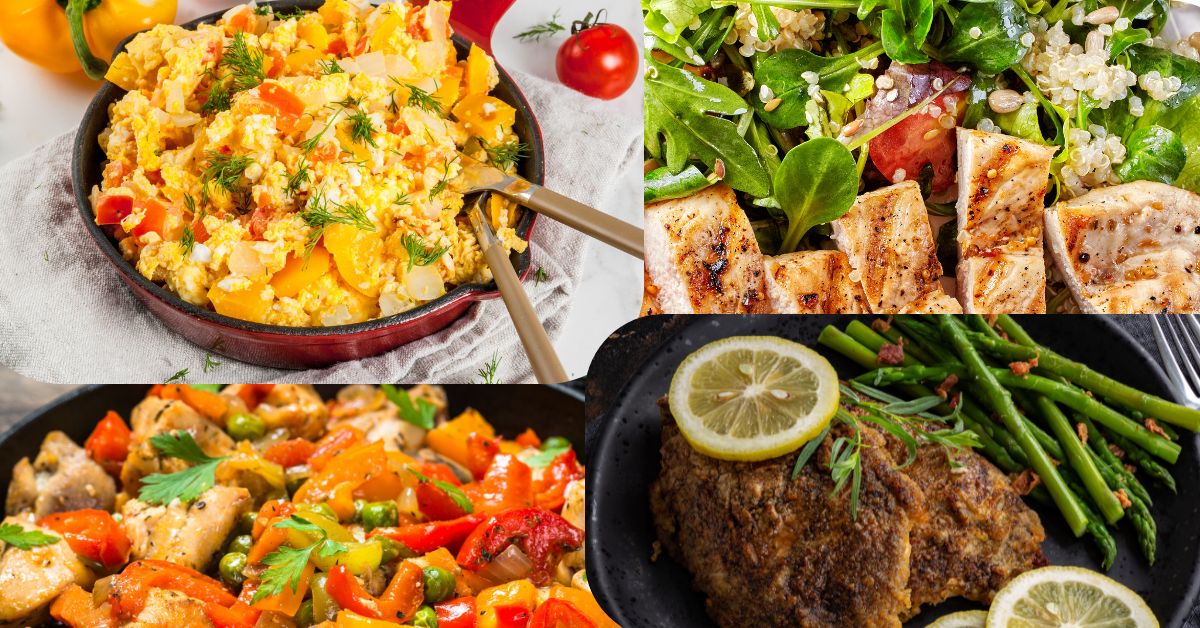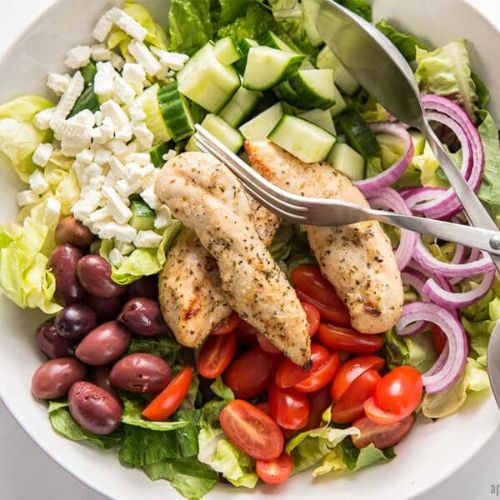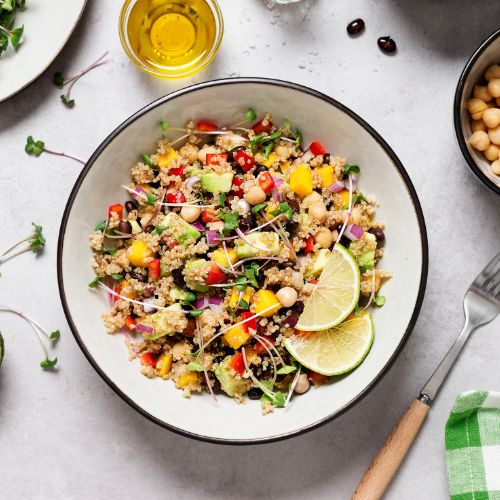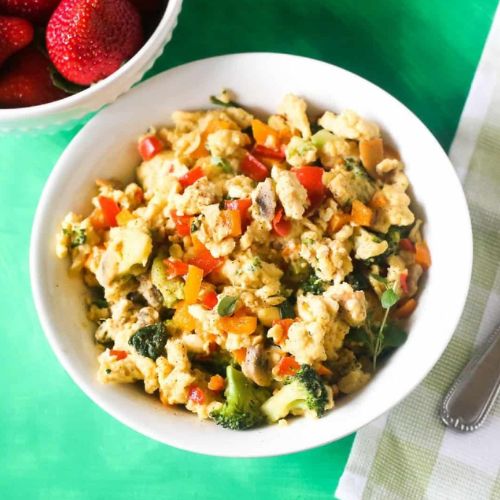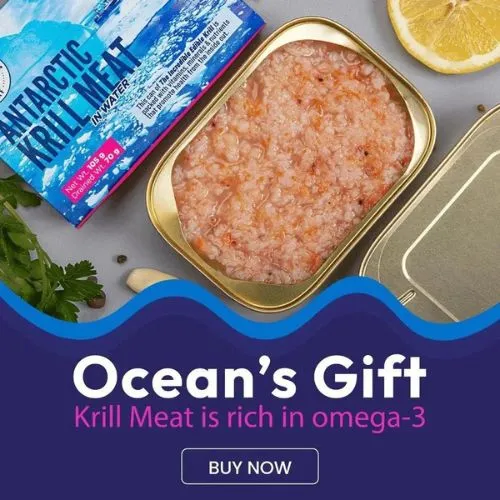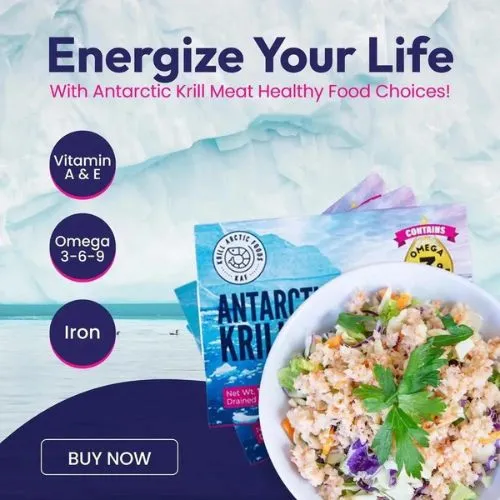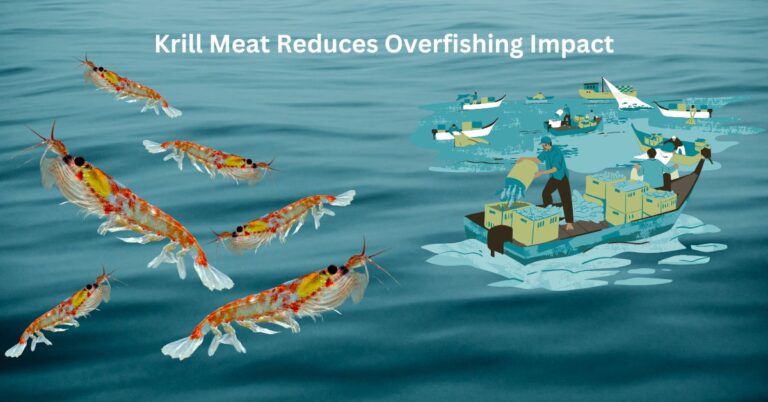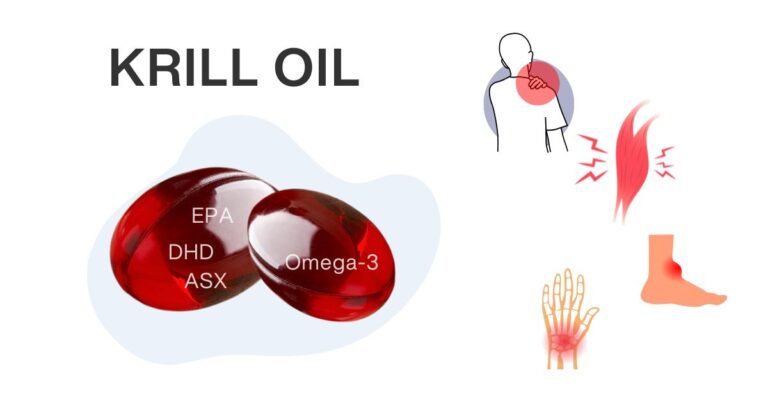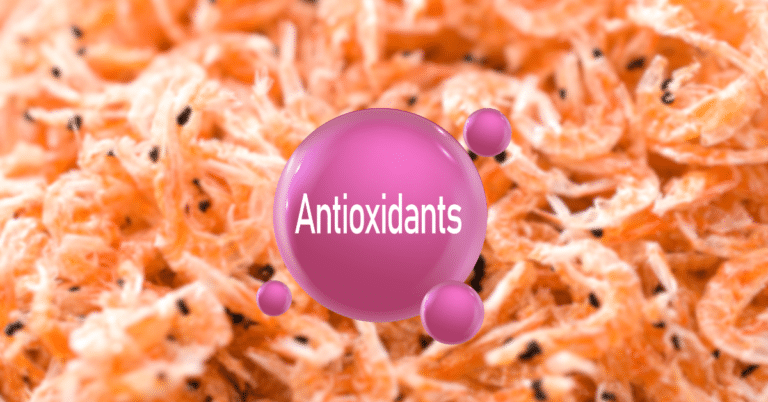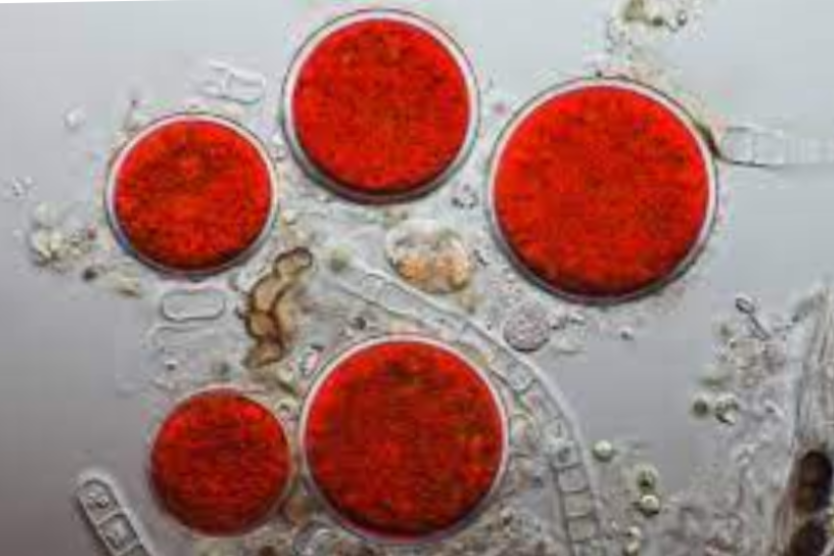Imagine coming home after a long day at work or wrapping up an intense workout, and all you want is a healthy meal that fills you up without weighing you down. You’re looking for something that keeps you full and energized but is low in fat and packed with protein. Sound familiar? You’re not alone many of us face this daily challenge of finding meals that are both satisfying and nutritious.
High-protein, low-fat meals are not only great for supporting muscle recovery but also help maintain a healthy weight and boost metabolism. Protein-rich foods keep you full for longer, preventing unnecessary snacking, while the low-fat component ensures you’re not adding extra calories to your diet.
In this article, we’ll dive into some of the best low-fat, high-protein meal options that are both delicious and simple to prepare. Whether you need a quick weeknight dinner or a post-workout recovery meal, these options are designed to fuel your body with the nutrients it needs, without the extra fat. From lean meats and seafood to plant-based alternatives, we’ve got a variety of choices to suit every preference. Let’s get into these wholesome, lean, and clean meal ideas!
What Makes a Meal Low in Fat and High in Protein?
A low-fat, high-protein meal is built on selecting foods that offer high levels of protein without excess fat. Chicken breast, fish, tofu are some of the most popular and high protein ingredients with very little fat.
Relying on just one type of protein, whether animal or plant-based, may not be enough for overall health. So, we should round out meals with fiber-rich vegetables like leafy greens and bell peppers, which provide essential nutrients without contributing extra fat.
It’s not just about the ingredients, though—how you cook matters too. Opt for methods like grilling, baking, steaming, or poaching, which don’t require heavy oils or fats. These techniques help to keep the fat content low.
Top Lean Protein Sources for Low-Fat, High-Protein Meals
When it comes to building a balanced diet, lean protein sources are key for achieving your health goals without the unwanted fats. Whether you’re focused on muscle growth, weight management, or simply maintaining a healthy lifestyle, low-fat, high-protein meals provide the fuel your body needs. From versatile poultry options like chicken breast and turkey to seafood, dairy, and plant-based choices, each food offers a unique profile of nutrients. Incorporating a variety of these lean proteins into your meals will not only boost your energy and keep you feeling full but also support long-term wellness by minimizing excess fat intake.
Chicken Breast
A standard 100-gram serving of chicken breast contains around 31 grams of protein and just about 3.6 grams of fat. This makes it an excellent choice for lean protein, perfect for muscle building or weight management. Whether grilled, baked, or added to a salad, chicken breast fuels your body with high-quality protein without adding excess calories.
Turkey
Turkey brings versatility to the table. It’s lean, flavorful, and fits seamlessly into everyday meals like stir-fries or wraps. With a strong protein profile and low-fat content, it keeps you feeling satisfied without weighing you down. In fact, 100 grams of cooked turkey breast provides about 30 grams of protein and just 1-2 grams of fat, making it an excellent choice for those seeking a high-protein, low-fat meal option. Whether you’re looking for post-workout fuel or a healthy dinner, turkey delivers the nutrition you need to stay energized and full.
White Fish (e.g., Cod, Tilapia)
For a light, protein-packed option, white fish like cod and tilapia hit the mark. These fish are low in fat but high in quality protein, making them excellent for heart health and overall well-being. 100 grams of cooked cod contains around 18 grams of protein and less than 1 gram of fat, while 100 grams of tilapia provides about 26 grams of protein and just 2-3 grams of fat. Both fish are easy to cook, and their mild flavor pairs well with a variety of herbs and seasonings, ensuring your meals stay flavorful and interesting while keeping it lean and nutritious.
Egg Whites
Egg whites are like a blank canvas, offering pure protein without the fat. Whether scrambled, boiled, or used in omelets, they’re a staple for anyone looking to keep their meals light yet nourishing, especially at breakfast. 100 grams of egg whites provides about 11 grams of protein and contains virtually no fat (less than 0.1 grams), making them an ideal choice for anyone focusing on lean, high-protein meals. They’re perfect for building a nutritious meal without adding unnecessary calories or fat.
Low-Fat Greek Yogurt
Greek yogurt is a smart way to pack in protein without the extra fat. It’s creamy, rich, and ideal for snacks, smoothies, or even as a base for savory dips. The high protein content supports muscle repair and keeps you full for longer stretches. 100 grams of plain non-fat Greek yogurt contains about 10 grams of protein and 0 grams of fat, making it an excellent choice for a light yet filling option. It’s versatile and can be easily incorporated into both sweet and savory dishes to boost your protein intake without adding extra calories
Lentils and Beans
Lentils and beans are plant-based powerhouses. They’re loaded with protein and fiber, offering a hearty texture without adding fat. 100 grams of cooked lentils provides about 9 grams of protein and less than 0.4 grams of fat, while 100 grams of cooked beans (like black beans or kidney beans) contain around 8-9 grams of protein and less than 0.5 grams of fat. These legumes are perfect for soups, stews, or salads, delivering protein that’s filling and promotes digestive health, thanks to their high fiber content.
Krill Meat
Krill meat is a unique and nutrient-dense source of lean protein. With an impressive protein content and very low fat, krill offers a sustainable seafood option that supports muscle repair and overall health. 100 grams of krill meat contains about 20 grams of protein and just 2 grams of fat. However, the fat it does contain is rich in omega-3 fatty acids, including EPA and DHA, Krill meat can be easily added to salads, stir-fries, or enjoyed on its own, making it a versatile addition to any low-fat, high-protein meal plan.
Each of these foods brings something unique to your plate, making it easier to create meals that are both nutritious and satisfying. By focusing on lean proteins, you’re giving your body the right tools for energy, muscle growth, and overall health—without the extra baggage of fat.
5 Delicious Low-Fat, High-Protein Meal Ideas
Here are five delicious low-fat, high-protein meal ideas with ingredients for each dish. These meals are simple, nutritious, and full of lean protein to fuel your body without the extra fat:
1. Grilled Chicken Salad with a Light Vinaigrette
This vibrant salad is the perfect blend of lean protein and fresh veggies, offering a light yet satisfying meal that’s packed with flavor and nutrition.
Ingredients:
- 1 boneless, skinless chicken breast (grilled)
- 4 cups mixed salad greens (romaine, spinach, arugula)
- 1/2 cup cherry tomatoes (halved)
- 1/4 cucumber (sliced)
- 1/4 red onion (thinly sliced)
- 1 tablespoon olive oil
- 1 tablespoon balsamic vinegar
- Salt and pepper to taste
Instructions:
Grill the chicken breast, slice it thinly, and layer it over a bed of fresh greens and vegetables. Drizzle with a light vinaigrette made from olive oil and balsamic vinegar. Season with salt and pepper to taste.
Why It Works:
Chicken breast is an excellent source of lean protein, while the greens provide fiber and vitamins. The light vinaigrette keeps the fat content low without sacrificing flavor, making this meal both filling and refreshing.
2. Baked Tilapia with Roasted Vegetables
For a wholesome, protein-packed meal, baked tilapia paired with roasted vegetables is a simple yet delicious option that keeps things healthy and satisfying.
Ingredients:
- 2 tilapia fillets
- 1 tablespoon lemon juice
- 1 tablespoon olive oil
- 1 cup broccoli florets
- 1 cup carrots (sliced)
- Salt, pepper, and garlic powder to taste
Instructions:
Bake the tilapia in a 400°F oven for about 12-15 minutes, drizzling with lemon juice. Toss broccoli and carrots in olive oil, season with salt, pepper, and garlic powder, and roast in the oven until tender.
Why It Works:
Tilapia is a light, low-fat fish packed with protein, while roasted vegetables offer essential vitamins and minerals. The combination creates a well-balanced meal that is nutritious and easy on your digestive system.
3. Turkey and Vegetable Stir-Fry
Quick, easy, and full of flavor, this turkey and vegetable stir-fry is a fantastic way to enjoy a lean protein meal that’s both filling and nutritious.
Ingredients:
- 1 pound lean ground turkey
- 1 tablespoon olive oil
- 1 red bell pepper (sliced)
- 1 cup broccoli florets
- 1/2 cup snap peas
- 1 tablespoon low-sodium soy sauce
- 1/2 teaspoon ginger (grated)
Instructions:
In a pan, cook ground turkey in olive oil until browned. Add bell pepper, broccoli, and snap peas, stir-frying until tender. Season with soy sauce and ginger for flavor.
Why It Works:
Lean ground turkey provides ample protein with minimal fat. The vegetables are rich in fiber and nutrients, and the low-sodium soy sauce adds flavor without excess salt. This stir-fry keeps you full while being light and healthy.
4. Krill and Quinoa Salad
For something light but nutrient-dense, this krill and quinoa salad is the ideal balance of lean seafood protein, fiber-rich grains, and fresh greens.
Ingredients:
- 1 cup cooked quinoa
- 1/2 cup krill meat (cooked)
- 2 cups mixed greens (spinach, kale)
- 1/2 cucumber (diced)
- 1/4 avocado (sliced)
- 1 tablespoon lemon juice
- 1 tablespoon olive oil
- Salt and pepper to taste
Instructions:
Combine cooked quinoa and krill meat with mixed greens, cucumber, and avocado. Drizzle with lemon juice and olive oil. Toss to mix and season with salt and pepper.
Why It Works:
Krill meat is a low-fat protein source that’s rich in omega-3s, while quinoa adds both protein and fiber, making this salad highly nutritious. The healthy fats from avocado help keep you full and satisfied without overloading on calories.
5. Egg White Veggie Scramble
Start your day with this egg white veggie scramble—a high-protein, low-fat breakfast that’s both nourishing and quick to make.
Ingredients:
- 4 egg whites
- 1 cup spinach
- 1/2 cup mushrooms (sliced)
- 1/2 tomato (diced)
- Salt and pepper to taste
- Cooking spray or a teaspoon of olive oil
Instructions:
In a pan, sauté spinach, mushrooms, and tomatoes until softened. Add egg whites and cook until scrambled. Season with salt and pepper.
Why It Works:
Egg whites are a pure protein source without the fat found in yolks, making this a perfect light meal. The veggies provide vitamins, minerals, and fiber to round out a breakfast that keeps you energized and satisfied.
These ingredients will help you create satisfying, high-protein meals that are both flavorful and light on fat. Enjoy!
Health Benefits of Low fat High Protein Meals
Low-fat, high-protein meals offer numerous health advantages, from supporting weight management to improving heart health. Below, we’ll take a closer look at the key benefits of including these meals in your diet.
- Supports Muscle Growth and Repair:
Protein is a key building block for muscle tissue. Whether you’re recovering from an intense workout or simply maintaining muscle mass as you age, high-protein meals help repair and rebuild muscles. This is especially important for athletes and individuals looking to increase lean body mass. The low fat content ensures you get the necessary protein without the extra calories from fat. - Aids in Weight Management:
High-protein meals increase satiety, which means you feel full and satisfied for longer periods. This can help reduce overall calorie intake and prevent snacking on unhealthy foods. The low-fat aspect of these meals ensures you’re not consuming unnecessary calories, making it easier to maintain or lose weight while still feeling nourished and energized. - Boosts Metabolism:
Protein has a higher thermic effect of food (TEF), meaning the body uses more energy to digest it compared to fats or carbohydrates. This results in a higher calorie burn, even at rest. By incorporating high-protein meals with low fat, you can enhance your body’s ability to burn calories and improve overall metabolic function. - Promotes Heart Health:
Reducing your intake of dietary fats, particularly saturated and trans fats, helps lower cholesterol levels and reduces the risk of heart disease. Low-fat meals, especially those rich in healthy protein sources like fish, lean meats, and legumes, can improve cardiovascular health by keeping blood vessels clear and promoting healthy blood pressure. - Stabilizes Blood Sugar Levels:
Protein slows the absorption of sugar into the bloodstream, helping to prevent blood sugar spikes and crashes. This is especially beneficial for people with diabetes or those at risk of developing the condition. By pairing high-protein foods with low fat, you can keep your blood sugar stable, leading to more consistent energy levels throughout the day and reduced cravings for sugary snacks.
Simple Tips for Cooking Delicious Low-Fat, High-Protein Meals
Preparing low-fat, high-protein meals doesn’t require fancy techniques, just simple methods and the right tools. Here are some easy ways to create delicious, nutritious meals:
Cooking Techniques for Lean Protein
- Grilling: A go-to method because it allows natural fats in the protein to drip away, leaving you with lean, flavorful meat or fish.
- Baking: Seals in moisture without the need for added oils, making it ideal for chicken, fish, and tofu.
- Steaming: Keeps proteins and vegetables tender and nutrient-packed, preserving their natural flavors.
Light, Flavorful Seasonings
- Herbs and Spices: Skip the heavy sauces and butter. Use fresh parsley, rosemary, and thyme for brightness. Paprika, cumin, and garlic add depth without the calories.
- Acidity for Balance: A squeeze of lemon or splash of vinegar elevates the flavors, keeping the dish light yet flavorful.
Build a Balanced Plate
- Vegetables: Pair your protein with fiber-rich vegetables like leafy greens, bell peppers, or broccoli to add color and essential nutrients to your meal.
- Whole Grains: Add whole grains like quinoa or brown rice for a hearty, textured base that offers lasting energy.
Quick Meal Prep Tips
- Batch Cooking: Grill or bake several portions of protein to use throughout the week.
- Storage Tips: Store cooked proteins in airtight containers for 3-4 days in the fridge or freeze for longer storage.
- Marinate for Flavor: Prepare quick marinades with olive oil, lemon juice, and herbs overnight to lock in flavor.
Alternative Protein Sources
- Egg Whites: A low-fat, high-protein option for scrambles or smoothies.
- Cottage Cheese: High in protein and low in fat, great for adding to salads or as a snack.
- Tofu and Tempeh: Versatile plant-based proteins that can be grilled, baked, or stir-fried.
- Krill Meat: A lean, omega-3 rich protein that’s sustainable and perfect for low-fat meals.
Best Tools for Low-Fat Cooking
- Non-Stick Pans: Great for cooking proteins without adding extra oil.
- Air Fryer: Gives food a crispy texture without deep frying.
- Steamer Basket: Keeps vegetables and proteins tender and nutritious.
- Grill Pan: Allows for indoor grilling, draining away fats while keeping the flavor.
Conclusion
Adding a variety of low-fat, high-protein meals to your diet is a smart, sustainable way to improve your health. These meals help build muscle, provide steady energy, and support weight management—all without the unnecessary fats that can slow you down. Lean meats, seafood, plant-based proteins, and nutrient-packed dairy offer endless ways to keep your meals both healthy and flavorful.
For those looking to try something different, krill meat is an excellent choice. Its impressive nutritional profile makes it a unique and valuable addition to any meal plan. Whether your goal is better fitness or simply maintaining a balanced diet, these meal options help you take control of your health and keep you feeling your best. So, give these ideas a try and see how easy it is to make nutrition work for you!
FAQs
What are the benefits of a low-fat, high-protein diet?
A low-fat, high-protein diet helps with muscle building, weight management, and maintaining energy levels throughout the day. It also supports overall health by reducing fat intake while providing essential nutrients to repair and grow muscle tissue.
How much protein do I need each day?
Protein needs vary based on your age, activity level, and health goals, but a general guideline is around 0.8 to 1 gram of protein per kilogram of body weight. Active individuals or those aiming to build muscle may require more.
Is krill meat a good source of protein?
Yes, krill meat is an excellent source of lean protein and contains beneficial omega-3 fatty acids. It’s low in fat and can be a unique, nutritious addition to a high-protein diet.
Can I include healthy fats in a low-fat, high-protein diet?
Yes, it’s important to include small amounts of healthy fats, like those from avocados, nuts, seeds, or olive oil. These fats support heart health and help absorb fat-soluble vitamins while still keeping the meal balanced.
What qualifies as a low-fat, high-protein meal?
A low-fat, high-protein meal consists of ingredients that provide a high amount of protein with minimal fat content. Lean meats, fish, plant-based proteins, low-fat dairy, and eggs are common examples.

